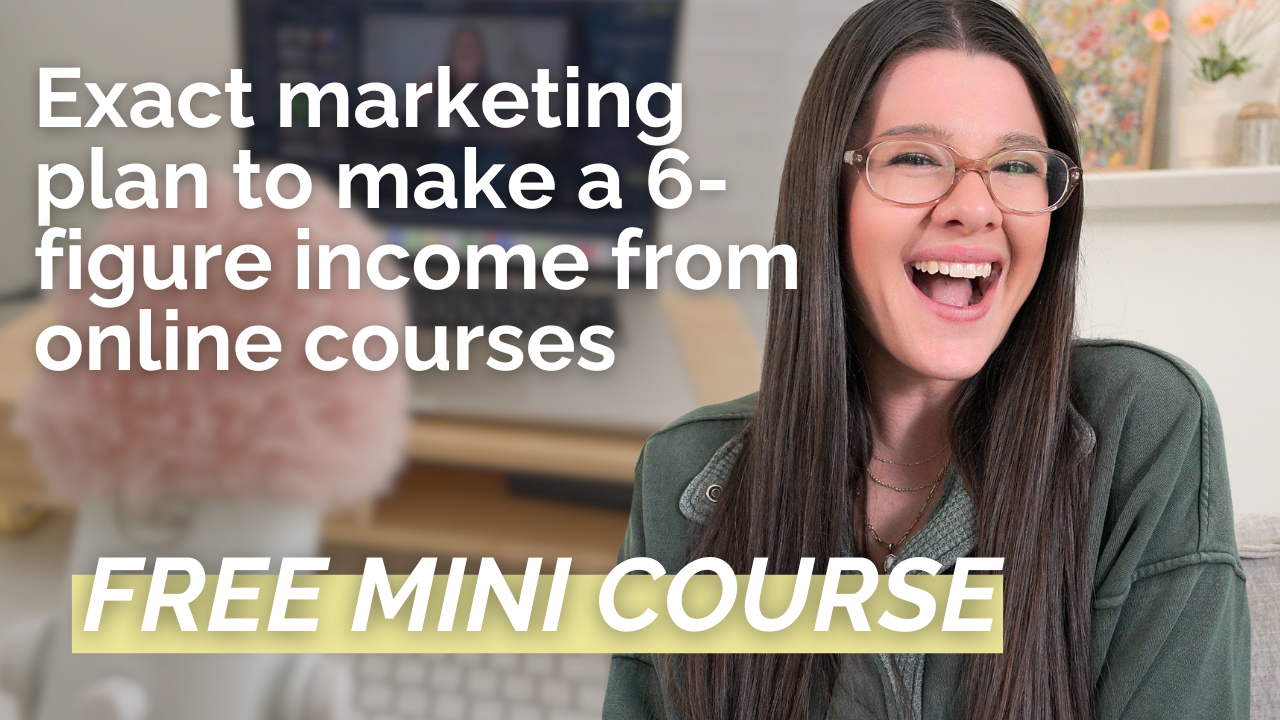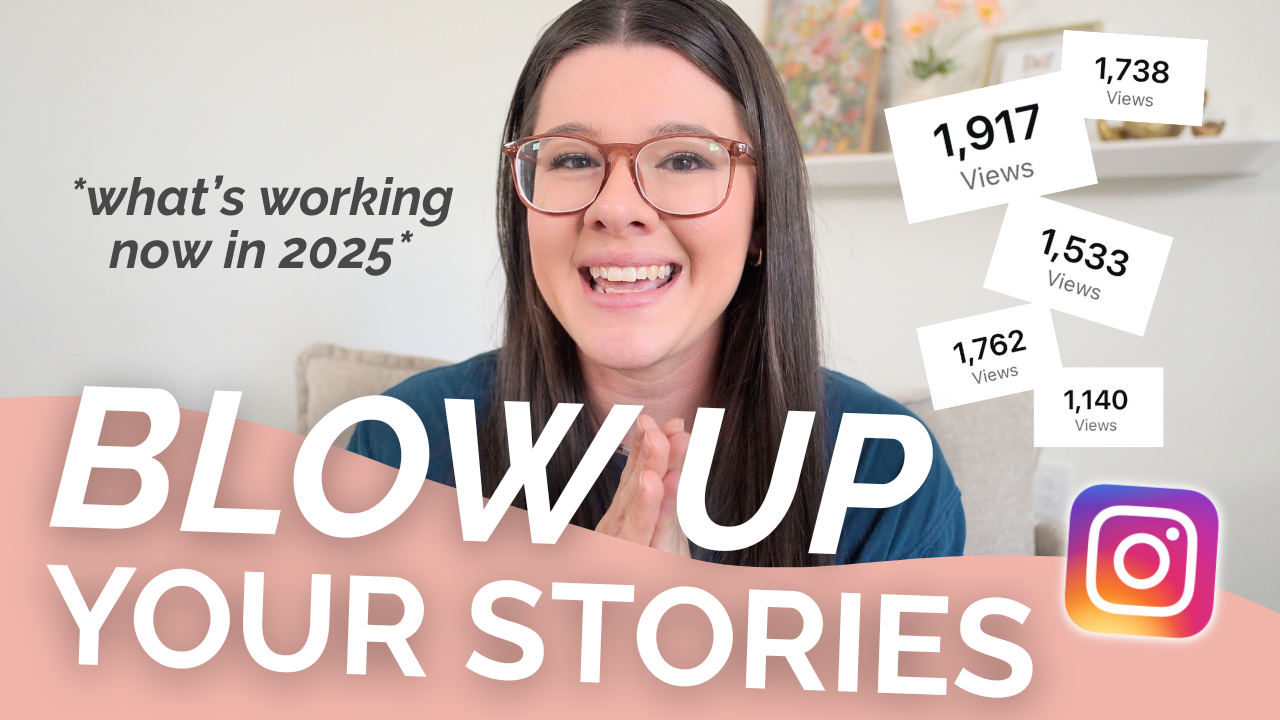Recently, we talked about how I get 25k+ views on my website every month – and the (not so) surprising reason was because of my SEO strategy through Google for my blog. After I shared that I use my blog to get those views, so many of you asked for a video about that strategy in more detail! I’m not an SEO expert, but I am someone who has come to understand how all of this works to benefit my business and brand. So let’s break down what SEO really is in plain English so you can understand how to make improvements in your own strategy! I’m so excited to talk all about SEO for beginners today! It’s way easier to improve your SEO strategy than you think, I promise.
WHAT IS SEO?
“SEO” stands for Search Engine Optimization which basically means what are the chances that your page will show up when someone does a search on Google. The better your SEO strategy, the higher your chances are of coming up on Google during a search (below paid ads).
SEO FOR BEGINNERS
When you’re working on implementing a better SEO strategy, there’s a few things to consider. First things first: make sure that what you’re sharing and optimizing posts for makes sense with your brand. I recommend thinking about what people search for when they’re looking for a business like yours. This can help you determine types of content to share and words or search terms to optimize your posts for. When you’re first starting, be more specific with your search terms (i.e. “instagram reels tutorial for beginners” versus “instagram tips”). This will help Google quickly understand who you are and what you do. Not only that, when you’re more specific with your search terms, you have less to compete with as you try to rank on Google.
Another thing that was a game changer for me was to update my website consistently by blogging. Google wants to see that you’re providing fresh content on a regular basis – and blogs are the perfect way to do this! Find ways to create content regularly (I recommend weekly!) on your site. Whether you’re sharing your sessions or weddings, YouTube vidoes, or podcast episodes, share your content consistently – and make sure those posts are optimized.
TIPS FOR SEO OPTIMIZATION
As you’re creating those blog posts, there’s a few things you want to include and use to optimize your posts. First to include are backlinks. You want to link both internally (something on your site) and externally (something off your site) whenever possible. You should also aim to have a low bounce rate and quick load time for your pages. This means that people on your site are staying more than a few seconds – this should be a LOW number because we want them to stay on your site! For your website page or blog, your load time should be less than 3 seconds and you can test that easily. This will help with your bounce rate.
PREPARING YOUR BLOG CONTENT
When you actually load your blog post onto your site, you need to add a few things: page titles, alt text, links, and your copy. My content writer, Kristina, is walking you through how to literally do all of these things in this week’s video – so make sure you tune into it (around 9:00) in the video and you can follow alongside her!
First things first, you need to write the copy for your blog post. Aim for 280-300 words (if not more) in your posts so that Google has something to read and review when ranking content. I recommend talking about your specific session in detail, making sure to include your location AND your keywords. Try to make sure you aren’t stuffing your copy full of your keywords though, as that can feel unnatural and can be damaging on Google. Google is smart – they know when you’re trying to beat their game!! Usually including it 2-3 times is enough.
After your copy is written, go back through and add headers. These can help break up your copy visually but also help for readers (and Google) to quickly determine what your post is about. Use your H2 or H3 option in your blog formatting to help them stand out from your regular paragraphs. Within the copy, aim to link to at least one other page, blog, or piece of content on your website – this is an internal link. If you’re sharing a wedding or session, try linking to the venue you’re discussing for an external link. Other external links could be your podcast page or YouTube channel. These are helpful too to show that you’re a real person and connecting to other real businesses and platforms!
HOW TO PREPARE IMAGES
Once your copy is done, it’s time to add your photos! Make sure that your images have been resized up to 2,000px on the long edge. This will help with your load time. There’s no magic number of how many images to include. Just tell your story! Once they’re added to your site, be sure to add alt text to your images. This can be done by selecting your image and hitting the “edit” or pencil icon. There, you’ll see a spot for alt text. Alt text is simply describing what the image is. You want to tell Google what the image is because it’s a computer and doesn’t have any other way to decide what the picture is of. This is NOT a place to stuff your keywords. Simply describe the image in a few words.
For my blog posts, our team uses Yoast SEO so we know how we’re doing with optimizing our posts. This plug in is super beneficial and allows us to quickly review everything in our post. I always spend a few minutes reviewing all of the feedback Yoast provides before publishing my post.
BEST PRACTICES FOR SEO
As you move forward and begin to implement these strategies, here’s a few other best practices! The first is to use Yoast SEO. Add this free plug in to your WordPress account to ensure that your posts are optimized. Remember, don’t keyword stuff! While you want to include your keywords that relate to your topics or your site, be careful about how you use them. You don’t need to put those keywords on every image and in every paragraph. Think about how to use them naturally.
Another thing to consider, resize your images! I like using TinyJPEG to resize my images or BlogStomp. BlogStomp is paid but you can also create collages for your blogs here, too. Another great free tool is Pingdom. If you add your page to their site, you can find out your load time. Remember, you want under 3 seconds! Finally, make sure that you’re reviewing your Google Analytics regularly. This is the best way to understand what’s working on your site and what isn’t. If you want to learn more about your Google analytics, read more HERE!
I hope that these tips about SEO and blogging help you feel more comfortable and ready to improve your SEO strategy.



